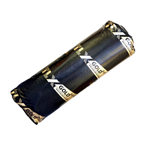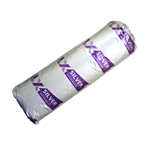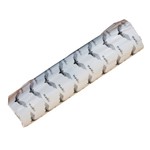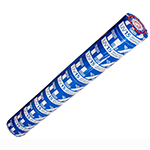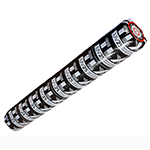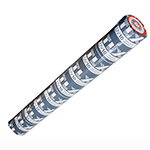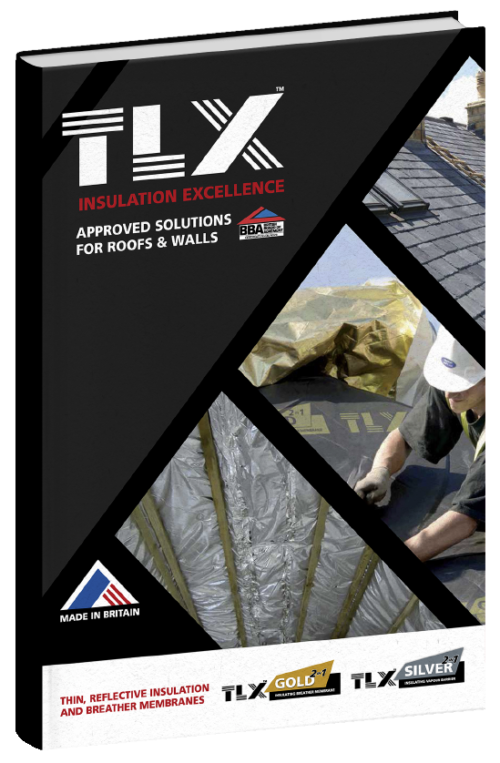Surface condensation
5 Minute read
-
There are different types of condensation, below we explain how to reduce the risks
-
We also explain where to / where not to ventilate to solve condensation problems
Although condensation is the same physical process wherever it occurs, it is usual to distinguish between surface condensation – on walls and ceilings, and under roofing underlays in cold lofts – and interstitial condensation, which occurs in spaces within the rafters or stud wall.
Condensation occurs when the air cannot hold any more moisture and droplets of water begin to form on surfaces. Warm air can hold more moisture than cold air. If the temperature of moisture-laden air suddenly drops, or if too much moisture is entering a cold space, then condensation will occur.
At 20°C, a cubic metre of air holds a maximum of 17.3g of water vapour. The air is then saturated. At 10°C, it can only hold 9.4g. If a typical UK house heated to 20°C has a relative humidity (RH) of 60% then there will be (0.60 x 17.3g) 10.4g per m3 of water vapour in the air. If this air comes into contact with a surface at only 10°C then water will condense on this surface. This is because 10.4g is too much for the air next to the cold surface to hold.
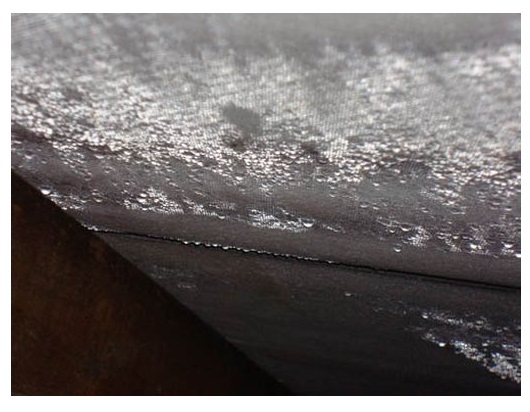 Condensation on the roof underlay of a cold loft
Condensation on the roof underlay of a cold loft
A typical domestic house creates 12-15 litres of water vapour each day, from cooking, washing, etc. Much of this ends up migrating through the plasterboard – unless it is a modern house with a vapour barrier under the plasterboard of the bedroom ceilings. Where the house has a traditional ventilated loft with no loft insulation then heat will also rise up from below. And if the ventilation is adequate then there will perhaps only be a little surface condensation on the underside of the underlay on the coldest days of the year, plus frost forming and melting if it’s really cold.
Once the recommended 270mm of loft roll insulation is fitted between and over the joists, however, preventing heat from escaping up from the rooms below, the loft temperature will be much colder and condensation far more likely. It then becomes essential to ensure that the eaves vents are providing sufficient cross-ventilation and are not blocked by the insulation blanket. Seal any gaps around penetrations into the loft, e.g. around pipework and cables. As well as obvious checks like ensuring extractor fan ducts do not exhaust into the loft, and that the cold-water tank lid is secure.
If there is still a condensation problem then ridge or tile vents should be fitted. Ideally a vapour barrier would be fitted under the ceiling plasterboard of the rooms below. This prevents most of the water vapour from getting into the loft in the first place. When re-roofing, then using a breather membrane (which allows water vapour to pass through it) rather than a bitumen felt would be desirable, and, if it is impossible to introduce vents (as might be the case with very old or Listed buildings), then use an air-open breather membrane which gently ventilates over its whole area.
Breather membranes
If a breather membrane certified for use in an unventilated loft is used then ventilation may not be necessary. Though this might depend on whether a vapour barrier is installed underneath the joists. Plus factors such as the local climate, the depth of loft roll present and how much moisture is entering the loft. It is more usual to ventilate even with a breather membrane, however.

Condensation on walls and near corners and windows
You often find that condensation occurs around windows (or on them if only single-glazed). Since the frames bridge across to the outside and so are often colder than the adjacent internal walls. Another common spot is at the corners of rooms where, behind the plasterboard, there is often a cold spot. This is where the different building materials join. An example of a thermal break is where there is a brick external wall with plasterboard and plaster dabs. When wet patches appear over the wall at points where there are dabs behind, providing a pathway for heat loss.
The danger is not only damage to the materials themselves. Mould growth can release spores that can aggravate health conditions, such as respiratory diseases.
What’s the answer?
Ventilate, ventilate and ventilate, and maintain a reasonable temperature within the house. But even if a house is well insulated the occupants may be reluctant to open windows as this is perceived as letting heat escape.
The modern approach to housebuilding and insulation is to create an airtight and vapour-tight internal layer on the warm side of the insulation. This prevents interstitial condensation in the rafter and stud wall spaces. Use mechanical heat recovery and ventilation (MHRV) systems to ventilate the house. Double or triple-glazed windows have trickle vents. The building is designed so that thermal breaks in the building envelope are avoided.
But in an older property there is no such ventilation – draughts used to provide it! Even if you open windows, air circulation may be insufficient to remove moisture-laden air from the corners of the rooms. Draught-proofing and insulating to current standards and using a vapour barrier will, unfortunately, increase the amount of water vapour within the building and make surface condensation a possibility unless the rooms are kept sufficiently heated to prevent it.
How to mitigate it?
Kitchens and bathrooms should have extractor fans, plus vapour barriers behind the internal finish. Closing the internal doors to kitchens and bathrooms when cooking or showering prevents humid air from freely passing into the rest of the house.
If you close doors and windows of bedrooms while the occupants are asleep, moisture in exhaled air makes a humid atmosphere. It can often result in condensation around the windows. So be sure to open the curtains and a window for part of the day to ventilate the room.
If renewing windows, choose ones with trickle vents; you can also retrofit these to existing windows.
Be aware that in corners and behind curtains the air is stagnant and a likely spot for mould growth. Though quite often an outside thermal bridge causes this. Swab with mild bleach to remove the mould, and try to reduce the sources of water vapour. Also ensure the room does not get too cold.
Sample Pack Request
Error: Contact form not found.

